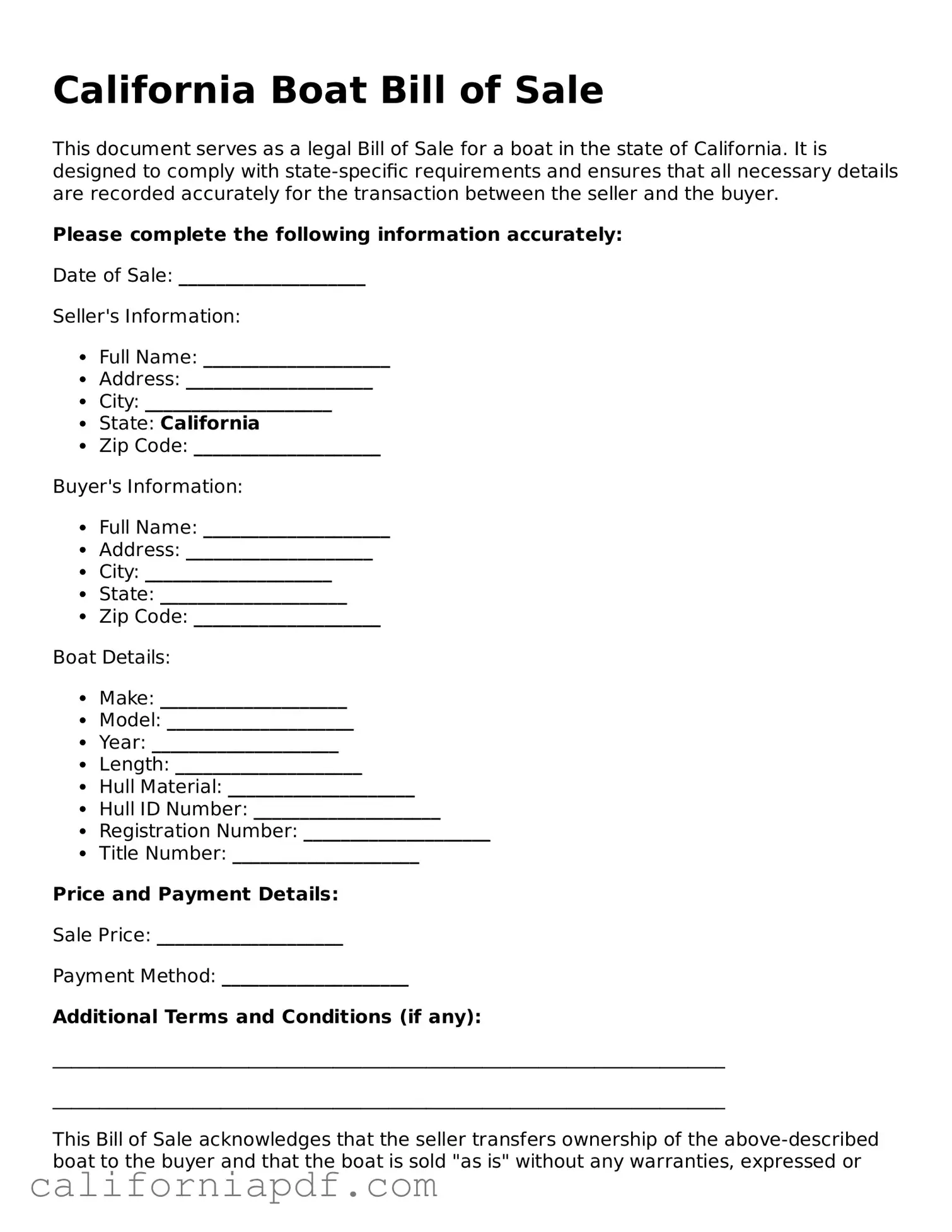California Boat Bill of Sale
This document serves as a legal Bill of Sale for a boat in the state of California. It is designed to comply with state-specific requirements and ensures that all necessary details are recorded accurately for the transaction between the seller and the buyer.
Please complete the following information accurately:
Date of Sale: ____________________
Seller's Information:
- Full Name: ____________________
- Address: ____________________
- City: ____________________
- State: California
- Zip Code: ____________________
Buyer's Information:
- Full Name: ____________________
- Address: ____________________
- City: ____________________
- State: ____________________
- Zip Code: ____________________
Boat Details:
- Make: ____________________
- Model: ____________________
- Year: ____________________
- Length: ____________________
- Hull Material: ____________________
- Hull ID Number: ____________________
- Registration Number: ____________________
- Title Number: ____________________
Price and Payment Details:
Sale Price: ____________________
Payment Method: ____________________
Additional Terms and Conditions (if any):
________________________________________________________________________
________________________________________________________________________
This Bill of Sale acknowledges that the seller transfers ownership of the above-described boat to the buyer and that the boat is sold "as is" without any warranties, expressed or implied. The buyer accepts full responsibility for the boat upon the completion of this sale.
Both the seller and buyer agree to the aforementioned details and terms:
Seller's Signature: ____________________ Date: ____________________
Buyer's Signature: ____________________ Date: ____________________
Note: It is recommended to keep a copy of this document for your records and to report the sale to the California Department of Motor Vehicles.
